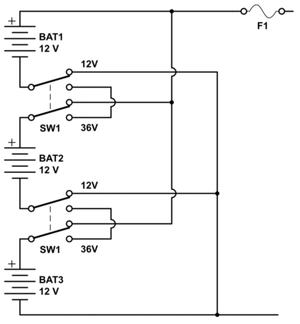This week, skip the movies and catch some shooting stars instead.
The annual Perseid meteor shower will be especially spectacular this year, and at its peak on Wednesday night and Thursday morning, you may be able to see as many as one or two shooting stars every minute.
That’s a lot of wishes.
Every summer, the earth plows through a stream of space debris thrown off from Comet Swift-Tuttle. Most of the plume’s particles are no bigger than grains of sand, but they’re moving at 100,000 mph. When one of them hits the Earth’s atmosphere, it burns up, producing a brilliant streak of light that can be visible for hundreds of miles around — if only for a second or two.
The Perseid meteor shower is one of the two or three best opportunities for watching shooting stars, according to NASA astronomer Tony Phillips, because of the large number of meteors. Also, says Phillips, “the Perseids are nice because they happen in August, so you don’t freeze to death watching them. ” The other big meteor showers, the Geminids and the Quadrantids, happen in December and January.
This year, two factors should make for unusually good meteor-watching. First, the moon will be new, which will help keep the sky dark — making it easier to see the meteors.
Second, the Earth is passing through the middle of a new cloud of space dust for the first time.
The sun blew this dust off the surface of Comet Swift-Tuttle on the comet’s approach in 1862, during the Civil War. At first, the dust hung around the comet in a small, compact cloud. When the comet returned to our neighborhood of the solar system in 1992, the dust particles in the cloud tagged along behind in an increasingly wider orbit, stretching the cloud into a long trail. This year, the earth will be passing very close to the center of that trail for the first time, which should produce an extra burst of shooting stars.
Unfortunately for Bay Area viewers, it will be night in Eastern Europe and Asia when we hit the center of the new cloud. But Californians should see a good show in the early morning Thursday and Aug. 13, says Peter Jenniskens, a meteor scientist at the SETI (Search for Extraterrestrial Intelligence) Institute in Mountain View.
There will be a steadily increasing number of meteors from now until Thursday, so you might even see a few meteors if you look tonight. But they will fall off rapidly after Thursday night.
For the best meteor-watching, experts suggest you try to get away from bright lights and fog that can obscure your ability to see the dim meteors. If you watch from downtown San Francisco on Wednesday night, you might see one or two meteors per hour, assuming the sky is clear. But from the countryside, far from any city lights, you could see as many as one or two meteors every minute.
“If you go away from the city lights, the Perseids are a wonderful thing to watch,” says Jenniskens.
Don’t want to go by yourself? Consider joining a “star party,” a nighttime get-together of amateur astronomers. This year, several local astronomy groups are sponsoring family-friendly star parties for watching the Perseids.
Best of all, you don’t need much to watch a meteor shower. “The best thing to bring is a reclining chair, a blanket, some hot chocolate, and that’s pretty much it,” says San Bruno resident Lance Boehme, an amateur astronomer and regular star party attendee.
As a bonus, the night sky has another treat for stargazers on Thursday morning. If you’re up for the meteor shower, look east near dawn. You’ll see a close encounter between the planet Venus and the crescent moon.
“So even if you didn’t see a single Perseid, you’d still get to see something very pretty,” Phillips says.
Where to watch
You can watch the Perseid meteor shower from any dark spot outside, as long as the sky is clear. Meteors will occur all night, but you’ll see the greatest number just before dawn on Thursday. Set your alarm for 4 a.m., go outside with a sleeping bag or warm blanket, and lie with your feet pointing northeast. Remember that it may take 20 minutes before your eyes adjust to the dark enough to see many meteors.
If you want to watch with other people — including dedicated amateur astronomers who can teach you about the night sky — consider attending a “star party.” Here’s a schedule of stargazing events where you can catch the Perseids:
You can join park rangers from 8:30 to 11:30 p.m. Wednesday and Thursday at Calero Park in San Jose. Bring a blanket or chair. Free, but reservations are required. Call (408) 268-3883.
The Fremont Peak Observatory in San Juan Bautista is open from 8 p.m. to midnight Wednesday and Thursday. For details, call (831) 623-2465 or see www.fpoa.net.
Foothill College Observatory in Los Altos Hills will be open to the public from 9 to 11 p.m. Aug. 13. For details, call (650) 949-7334 or see www.foothill.fhda.edu/ast/fhobs.htm.
Link: Perseid meteor shower to light up the skies
Link broken? Try the Wayback Machine.

